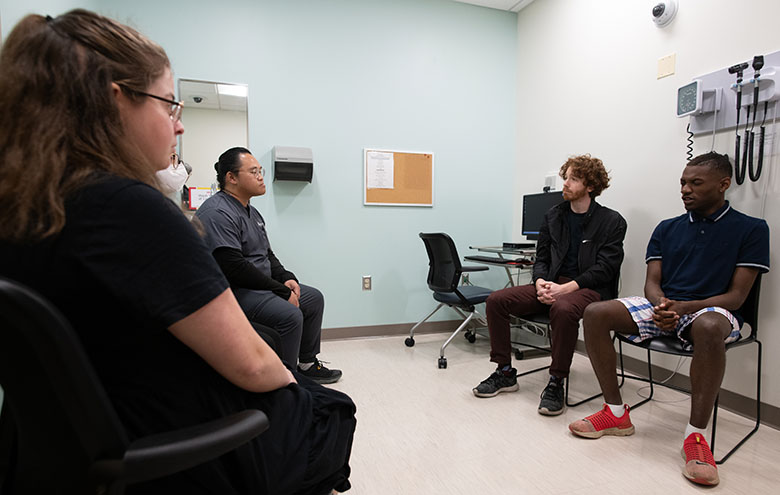Partnership to Advance Equitable Care for Those with Disabilities

Data shows just how necessary it is to ensure students who are working toward degrees in health and human services fields are educated to care for populations with intellectual and developmental disabilities — who often face barriers when it comes to receiving treatment.
A study from 2021 found only 40.7% of physicians were very confident about their ability to provide the same quality of care to patients with disabilities as they do to patients without. And just 56.5% strongly agreed that they welcomed patients with disabilities into their practices.
The University of Maryland Schools of Medicine and Nursing Standardized Patient Program — housed in the University of Maryland School of Nursing — in partnership with Special Olympics Maryland (SOM) and Special Olympics International (SOI) is working to ensure the next generation of health care professionals is well prepared to work with and treat individuals with intellectual and developmental disabilities.
The University of Maryland, Baltimore (UMB) is one of five universities in the country across four states to recently partner with the Special Olympics.
The Standardized Patient Program allows students to refine their clinical and communication skills with professional standardized participants (SPs). SPs are trained to portray a real patient in clinical instruction and assessment with students.
“Not only is this initiative expanding UMB’s inclusive and interprofessional curriculum, but it’s also breaking down barriers, biases, stigmas, and misconceptions, all while encouraging a shared commitment to inclusive health care,” said Rebecca Weston, EdD, MSN, RN, CNE, assistant professor at the University of Maryland School of Nursing and principal investigator on the grant that funded the collaboration. “This partnership has enabled us to envision a future where people with intellectual disabilities consistently receive equitable and accessible health care.”